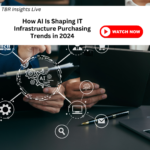SoftwareOne: Gritty, Determined, Local
SoftwareOne’s leadership hosted about 20 analysts for presentations, client briefings and breakouts dedicated to specific SoftwareOne solutions and services. In addition to attending the formal program, TBR analysts met one-on-one with select SoftwareOne leads. The following reflects both summit presentations and TBR’s ongoing research of and discussions with SoftwareOne.
Simplify access to technology
In the year since TBR attended SoftwareOne’s inaugural analyst event in Milwaukee, the company has refined its value proposition and further established its place in the market, in large part by expanding its IT services capabilities and revenues.
During his event opening presentation, Duffy outlined five client priorities that SoftwareOne intends to tackle, all of which echoed the company’s value proposition:
- Simplify access to technology
- Maximize ROI on technology spend
- Enhance workforce productivity
- Accelerate cloud adoption
- Fast-track results in the AI and generative AI (GenAI) era
The first two priorities align with TBR’s Voice of the Customer research, which shows that IT services and consulting buyers want to get more from their IT investments and expect new technologies, in particular GenAI, will be complementary, compatible and immediately additive in relation to existing technologies.
Overall, in TBR’s view, SoftwareOne has captured the current market vibe and positioned itself well to continue its transformation from a VAR, primarily involved in cloud and software resale, to a truly full-service IT company.
SoftwareOne: “We can predict when they are going to do what”
During the opening presentation, Duffy said that SoftwareOne understands when a client bought their various IT components, how much they paid, how happy they are with IT performance, and when their licenses are up for renewal. In short: “What do clients own and how do they build things?”
That insight, combined with SoftwareOne’s overall approach, allows the company to look at the market through a “customer’s lens” and not through SoftwareOne’s own delineations of its offerings. In TBR’s view, this distinction — which starts with a recognition of how customers think — often becomes clouded by organizational constraints and sales demands within many IT services companies and consultancies. Starting with the client’s business challenges in mind is relatively easy; gaining intimate knowledge of their IT environment and spend is not.
Schlotter, in his presentation, noted that SoftwareOne can “predict when [clients] are going to do what,” because the company has tracked patterns — including software renewals, adoptions, and wholesale changes — across its vast client base. Thomson deepened that point by saying that for SoftwareOne, “IT portfolio management is our value proposition.” Importantly, SoftwareOne sees self-funding innovation as the flywheel that takes the company’s understanding of a customer’s IT environment, including opportunities to optimize that environment, and turns it into new value.
Through initial software cost takeout, ongoing IT asset management (ITAM) services and a focus on licensing expenses, SoftwareOne helps CIOs free up capital to reinvest in technology modernization. As Thomson noted, “Licensing costs were last year’s problem,” so SoftwareOne leads with the value that will come through enhanced technology but always makes explicit that funding will come through savings around licensing. In TBR’s view, this is SoftwareOne’s defining strategic advantage. Full stop.
One last point on SoftwareOne’s thinking about the market and the company’s place in it: During her breakout presentation, Burke emphasized the continuing need to recognize regional differences at client facilities and managing, selling and delivering to all clients in a local manner. The technology, by its own nature, may be region-agnostic, but clients are, by their own nature, local. SoftwareOne, therefore, embraces a be-local, stay-local culture. One can see the echo of intimate knowledge of a client’s IT environment in being enmeshed in a local environment.
Sustained growth is an alliance play
Berry, a recent addition to SoftwareOne, explained the company’s new approach to running partnerships “like a business.” While potentially overly transactional, Berry framed SoftwareOne’s approach as being “proactive with a set of prioritized [strategic partners]” whereby SoftwareOne would invest in joint solutions and joint go-to-market support, while “continuing to support clients gaining access to many software vendors.”
To evangelize within SoftwareOne, alliance partner managers would be the face of that partner while also externally educating the partner on SoftwareOne’s value proposition and capabilities. According to Berry, the alliance partner managers would maintain strategic relationships while also operating “as a business” and supporting and influencing sales efforts.
Recognizing that SoftwareOne’s client base differs from those of the giant IT services companies and global consultancies, Schlotter said that while the majority of customers have already made a commitment to one cloud or another, the corporate (not enterprise) market has less mature cloud environments and remains open to “re-migration” advice — i.e., move to another cloud — from SoftwareOne.
In TBR’s view, having the capability to serve those chance encounters with a willing cloud-hopper should not distract from the overwhelming reality that most corporate and enterprise clients have already made some kind of commitment to a cloud provider.
On specific alliances, Berry and Schlotter noted Microsoft’s importance to SoftwareOne’s revenues and long-term strategy, including the short-term opportunities around Copilot. In Schlotter’s view, “Copilot is a door-opener because now the CIO needs to talk to us.” From the hyperscalers’ perspective, according to Schlotter, among SoftwareOne’s values is the company’s ability to make hyperscalers’ value even “stickier” at a client.
In TBR’s view, no single nonfinancial metric has been more passionately sought by consultancies, IT services companies and hyperscalers than client retention.
During informal discussions and a breakout session with Grillet, two points struck TBR as particularly relevant to SoftwareOne’s partners in the SAP space. First, out of SoftwareOne’s 400 SAP specialists, only 32 reside in the Americas, providing an opening for SoftwareOne’s partners to bring opportunities and greater scale. Second, Grillet noted that around half of SoftwareOne’s new SAP leads come from the company’s own ITAM business, demonstrating — to SAP — a clear differentiation for SoftwareOne. One final note: TBR has reported previously on SoftwareOne’s SAP practice and continues to view the company’s strategy as exceptionally well-suited to SoftwareOne’s capabilities and market position.
Not every superhero wears a cape
TBR’s event perspectives typically include extensive recapping of companies’ client stories, product demonstrations and performance metrics, but we left those elements out of this report. During the event, SoftwareOne provided numerous client stories, extensive details about its capabilities and numbers to support its growth, but we wanted to emphasize that SoftwareOne represents a different kind of competitive threat and partnering opportunity, independent of the usual evaluation metrics. Intimate knowledge of a client’s IT environment, to include licensing challenges and opportunities as well as usage and costs, provides a superpower potentially significant to technology partners and threatening to competitors, especially as we move into a better analyzed and more transparent GenAI era. Forewarned is forearmed, as they say.

 Jo Youngju, GettyImages via Canva Pro
Jo Youngju, GettyImages via Canva Pro
 Puneetyadav, Pixabay via Canva Pro
Puneetyadav, Pixabay via Canva Pro